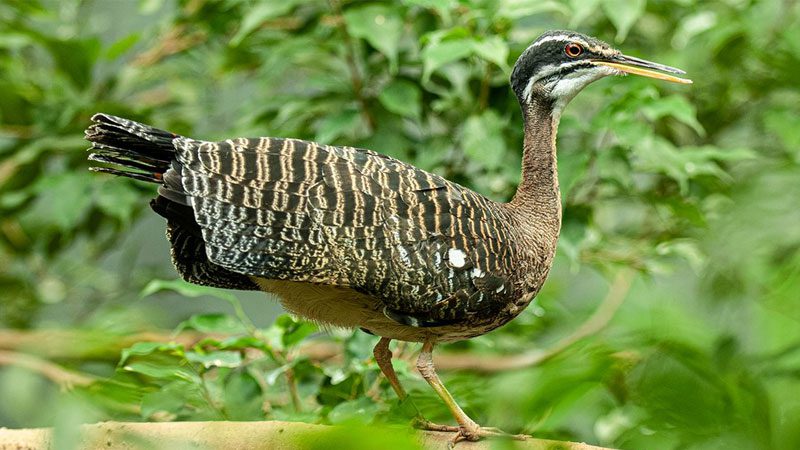Welcome to Lincoln Park Zoo’s new web app! Share your feedback

Sunbittern
McCormick Bird House
Did You Know?
- Sunbitterns’ mostly brown and white plumage is perfect for camouflage.
- To scare away predators, sunbitterns spread their wings out and down to display large red, yellow, and black patterns, which may be mistaken for eyes. This behavior is taught to juveniles at a young age.
- Sunbitterns’ long, pointed beaks are adept at spearing swimming fish.
Don’t See the Animals?
Why aren’t animals visible at all times? To promote positive animal welfare, we provide animals with choices. They can choose to spend time in areas that are out of public view.

Take an Animal Home with You
Overview
Scientific Name: Eurypyga helias
Class: Birds
Diet: Small frogs, crayfish, and crabs (also insects and mollusks)
Range: Central America and northern South America
Endangered Status: Least Concern
More Information
Sunbitterns are intricately patterned with a dark bluish-black head and white stripes above and below their eyes. Their breast, shoulders, and neck are brown, while the belly, throat, and undertail are white. They have stout bodies, long legs, a long bill, and a slender neck.
These birds are often found alone or in pairs. Females lay eggs in late spring or summer. Both parents build nests on branches over open water, then incubate eggs for around 27 days, switching places in the morning. Chicks, when born, have light brown plumage and black marbling down the head and neck, but are indistinguishable from adults by the age of two months.
